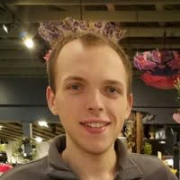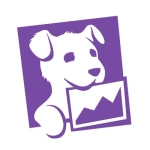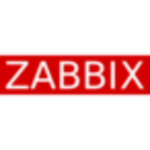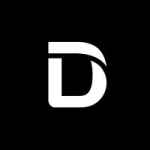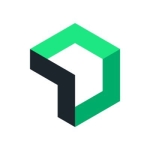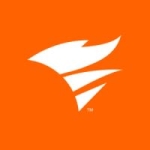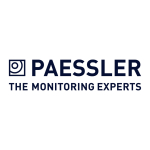What is our primary use case?
Our primary use case is to have a monitoring solution for our managed service clients. That was something we were offering, but we weren't really doing well on that front, in terms of having a proactive monitoring solution. That was the primary pain point we were trying to fix.
How has it helped my organization?
The main benefit is that we are able to offer better proactive support. Previously, we would deploy a lot of Meraki firewalls and we wouldn't really have proactive support on that. Meraki only offers email alerting, so alerts would come in by email and we wouldn't see them and we'd have to devise other means. With Auvik, we provide a quicker turnaround time for network issues.
It also enables our lower-tier techs to support everything. Normally, especially on the network side, the lower-tier techs are not as able when it comes to conceptualizing the network and visualizing how it's set up. Auvik's dynamic mapping really helps flesh that out. Even less-technically-oriented clients are able to look at Auvik and understand how their network is functioning, at least at a basic level.
In addition to the overall efficiency improvements due to the proactive alerting and the dynamic mapping, the ease of exporting the data that Auvik provides is a big benefit. There are several options throughout the product that allow you to export your data as an Excel spreadsheet. That means you can get the data that Auvik is using to show you everything. That makes it very easy to do asset inventory or to assess the end-of-life of certain products. It takes a lot of the human involvement out of those processes.
Also, in the past, there was a lot of effort that we'd have to put into keeping assets and inventory up to date, and it was mostly through manual data entry. Auvik cuts a lot of that out. Once you have the network monitoring set up, it has all that data that we would normally have to manually enter into ConnectWise, specifically. Now, that information can carry over automatically. So instead of having to do 10 or 15 clicks, and a bunch of typing for each configuration, you just get the network monitoring set up and set up the inventory syncing, and it happens in a couple of minutes.
By keeping inventories up to date, it saves us time. We heavily utilize ConnectWise configurations for determining contract renewals and we're able to focus more on that aspect, and less on ensuring accurate counts.
Another benefit is the ability to use the connector as a "jump-box "and get into other devices. Previously, we would have to either VPN into a network or get into the network through some other remote means, to troubleshoot and configure. But with Auvik, you have the ability to do quick, one-off troubleshooting commands. A technician can do that. You can also get into all the network devices and computers through Auvik itself.
And given the way it alerts, and how it shows the product, it does produce a lower mean time to resolution.
What is most valuable?
Auvik has a dynamic mapping feature. Once you get things loaded, it will show you how everything is connected. It also shows the alerts on that map, making it a very quick and human-readable way to dig into it. Overall, that visualization is really nice, especially the dynamic facet. You don't have to make those connections manually. Auvik does all that automatically. The mapping is very intuitive. The filters have a little learning curve, but even the part that isn't immediately intuitive is not hard to pick it up.
Other useful features are the typical ones, like configuration management. It will keep track of configuration changes on devices and log them.
The alerting is also definitely important. The solution integrates well with ConnectWise Manage and with Opsgenie, which we use for alerting techs after-hours.
It primarily monitors network devices by SNMP and command-line interface. They only charge for network devices, such as wireless LAN controllers, firewalls, switches, and routers, but they'll also grab and monitor printers through SNMP, Windows devices, and Windows hypervisors through WMI credentials.
Auvik also has a really good feature for keeping device inventories up to date. We haven't used it too much, because of the way that we've set it up. Auvik ends up overriding some of the stuff we do internally, but it has a very good way of keeping assets and inventory up to date. The most useful is the ConnectWise integration. It can find certain values, like serial numbers and it will either produce it if it doesn't exist or create a configuration in ConnectWise to match the device. It's really good for keeping all of our products up to date with the information.
What needs improvement?
I would like to see more extensive syslog capabilities. It can ingest syslogs and I think it can alert based on quantities of messages. You can also look back at some of the messages, but it's not a forensics level syslog.
Also, when it comes to mapping and visualizations, there are some imperfections. If Auvik can't exactly deduce how something is connected, it will show an inferred connection and that makes the map a little messy, but with the preset filters, which you can use to only look at network devices or known connections, you can get all the clutter out of there. Overall, it does a great job, but it would be nice if it had a better export feature. You can export it in a usable format, but it's not on the level of a Visio drawing, if you are trying to produce a network diagram. There's a lot of "in-Auvik" usability, but not necessarily outside of Auvik.
For how long have I used the solution?
I've been using Auvik for a little over a year.
What do I think about the stability of the solution?
We have had no issues of note, in terms of stability. There may have been one incident, but it was so minor that we don't even remember it. We have not had outage issues. They're usually pretty good about notifying you about outages and, usually, there are no adverse effects.
What do I think about the scalability of the solution?
The scalability is great. It's designed for an MSP, so adding more clients is extremely easy. We have yet to have an issue. Granted, we're probably not one of their larger deployments. Maybe at scale, when you get bigger, there are some issues, but so far, with our setup, we've never had any issues with scalability.
It is a cloud solution with an on-prem agent that you deploy at each site. We have it deployed for about 30 clients, and there are multiple collectors per client.
How are customer service and support?
So far, the tech support has been great. The only issue is that they have up to a 24-hour turnaround. Typically it's not that long but it's only available during business hours. For any type of issue we have, we can typically wait that long.
There would be an issue if a high-paying client had some sort of emergency situation.
How would you rate customer service and support?
Which solution did I use previously and why did I switch?
We were dabbling in PRTG Network Monitor. We were not using it in the same way but we would use it for occasional troubleshooting and gathering the same kind of data. That was what we would recommend before having our own product: to do a PRTG instance, given they give you the first 100 sensors for free, which covers a lot of niche issues.
How was the initial setup?
The initial setup is a straightforward process. After the Auvik code is implemented, it starts to populate network mapping within 10 minutes. Our average time for a full deployment is about an hour and a half.
At a lot of the places where we initially put it in, we didn't have great documentation on what was in that environment or how to get into the devices. If that information is already there, and especially if you have already had a solution in place, it should take less than an hour to get a site completely into Auvik.
There is no maintenance of the solution required at our end. Our support team of about 10 utilizes Auvik pretty frequently in the day-to-day. And client-facing managerial types, like chief information officers, use it quarterly to pull data and information. Other users include anyone else who needs to do troubleshooting or needs information. We have systems and network administrators who occasionally look at it, just to get a feel for the network.
What was our ROI?
The time-to-value was instantaneous. Once we got the deployment done, it immediately allowed us to better support networks in a proactive manner.
Which other solutions did I evaluate?
We were looking at a few options but it was hard finding the right balance. Some options had a lot of customization and you could get into the nitty-gritty. LogicMonitor was the primary example, but price-wise it was too much.
The other ones were open source and would have taken too much of a personnel investment. We would have had to dedicate someone to the role of understanding, maintaining, and updating the product.
Auvik hit a really good middle ground in that it had the usability and the features that we needed. And it's updated by them so we just have to use it. It's really an ideal solution given our setup.
Another reason that we picked Auvik was that its pricing is very good. The only non-open-source solution that had better pricing was PRTG, but Auvik had it beat in ease of use. All-around, Auvik has a really great price for the market.
In addition, the cloud aspect of Auvik is extremely useful in that we don't have to worry about downtime. We had a bunch of on-prem appliances at our main site, which wasn't really set up to be a data center. There would often be issues with unexpected downtime that would affect us, client-wide. Having Auvik in the cloud helped us immensely. Not having to worry about the infrastructure or the updates definitely takes a load off of our team. Those are areas where we previously had to put in notable effort.
The deployment of Auvik is much quicker than PRTG, given how PRTG sets up its agents. And once you pay for Auvik, there is no additional cost. SolarWinds is a little more complex and doesn't fit the same niche as Auvik. SolarWinds is more focused on a single enterprise, whereas Auvik is more MSP-focused.
Disclosure: PeerSpot contacted the reviewer to collect the review and to validate authenticity. The reviewer was referred by the vendor, but the review is not subject to editing or approval by the vendor.







